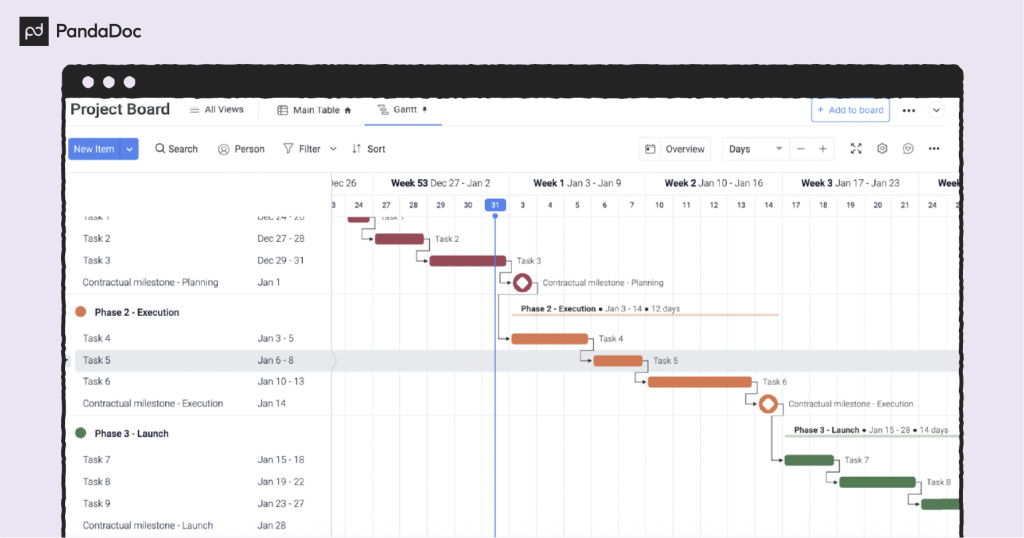Automation saves you time and money. But to reap its benefits, you need to document your workflow effectively first.
Although important, workflow documentation still may come across as a boring drill you naturally want to avoid.
But here are two pieces of good news: first, documenting processes is not as drab as it may appear. And second, when done right, it leads to more fun, money, and business growth.
In this article, we’re unpacking the process of documenting business processes (pun intended).
Don’t we all have enough regulatory bureaucracy to handle?
All organizations document their workflow to comply with official regulations, yes.
So, naturally, documenting has earned a reputation for being a meaningless chore the powers that be impose upon you, rather than an act of your choosing. And buying into that reputation might lead you into a trap.
As automation extends to more and more processes, you need to understand how things work in your organization. But you won’t be able to see that until you’ve analyzed and documented your workflow.
However, if you’re still not inspired by the idea, consider these ten (!) benefits of documenting your workflow, benefits that extend beyond automation:
- Consistency. Everyone is on the same page as they draw on the same templates, and the company develops one smooth step after another.
- Fast onboarding and training. You don’t need to explain the ins and outs to a new employee or the one you’ve just put into new shoes.
- Error reduction. When everyone works to the same operating principles, you have fewer errors and can track those that occur down easily.
- Healthy work environment. You don’t need to micromanage people when you know they know what to do, which allows them to avoid feeling supervised.
- Adaptability. You quickly adapt to changes when you can go back and see how everything works in your company. You know which buttons to press and which elements to replace with something more appropriate.
- Optimization. You can study and optimize a well-documented process by simply tweaking a few points in a template or tutorial.
- Scalability. Even when you start small, you should document your workflow (and workflow management) to painlessly scale your business later.
- Actionable insights. You can study your business processes to the smallest detail and spot bottlenecks and room for growth.
- Creativity. When you don’t need to think about how to do a repetitive task, you spare mental energy for creative thinking. After all, Steve Jobs optimized his brain power by not thinking about what to put on every day — he just wore the same thing.
- Legacy. With well-documented processes, you can revisit any point in your company’s history. You can use this to dig up case studies for your book, course, or coaching program.
To gain those rewards, you need to document more than what the regulator expects from you. The task may sound grueling, but only until you figure out what to document and see how doing so has changed the game.
And remember: the real fun can only begin when you’ve freed your hands from the chores through workflow automation.
Wait… Are we talking about writing reports?
“Alright, I see documenting processes makes sense. But does this mean preparing instructions or rather recording a process for a retrospective?” I hear you ask. And the answer is yes.
Workflow documentation works both ways:
- Documenting each process as it’s being completed.
- Documenting how each process should be completed.
That said, documentation isn’t necessarily a pile of papers or a computer folder stuffed with PDFs. By documentation, we mean records of events and guidelines, regardless of the form.
So, think an Excel table record, a template in your workflow software, or, indeed, a note on a napkin. All will help streamline your workflow, all will advance automation.
But what exactly do I need to do?
The process of documenting a workflow is straightforward. Here’s how it goes.
Step 1. Select a process
Every business process requires a specific take. For example, steps in fixing gear differ from those in the budget approval process. So, choose which process you want to document first.
You can frame it as a budget request, employee onboarding, facility maintenance or similar.
Step 2. Pick the process apart
Once you’ve decided which process to tackle, you should scrutinize it. Divide the process into small steps and visualize the journey to describe the process in detail.
If you are using PandaDoc, you can connect your account to Monday.com — a task management platform. This platform offers many ways to visualize a process flow, including flowcharts and diagrams.
A process presented step-by-step in a Gantt View by monday.com

At PandaDoc, we use Monday.com to streamline our workflow. And we love the platform, which is why we’ve integrated it with our service.
Now, if you add PandaDoc to your Monday.com tools, you can create standard documents (e.g., sales proposals) from a template in a few clicks, on one screen.
Moreover, once you’ve sent a document, you’ll know whether and when the recipient has opened it. The automation we love.
Step 3. Set a goal
Every process has a beginning and an end. An organizational process ends in an ultimate goal like closing a sale or fixing an error.
Don’t overthink goal setting — just use the classic SMART framework. Doing so suggests that you make your goals:
- Specific: target a specific area
- Measurable: state which metrics you’re going to use to track progress
- Attainable: assign a responsible person or people
- Realistic: make sure that results don’t require more resources than you have
- Time-related: set a deadline or an average time to do the task
Once you’ve achieved a SMART goal, you should prove it with a document like a report or contract, depending on the process type.
Step 4. Write directions
Now that you have the process as an HQ picture, you can write instructions. Technical Writing Essentials from the University of Victoria in British Columbia, Canada, suggest the following practices:
- Give technical background at the beginning (i.e., technical terms)
- Specify where the process performer can get resources, information and permissions
- Keep the language clear, precise and simple
- Avoid the passive voice and always specify who does what
- Describe each step in the smallest technical detail
- Include all the process variations and possible bottlenecks you can think of
- Include warning and caution notices and make them immediately visible
- Accompany the document with illustrations and examples
- Present the instructions in a digestible way by adding headings, subheadings, bold font and lists
Step 5. Check what you’ve written
Once you’ve documented the process, leave the documentation alone for a few days if you can. Then check back to look at it with fresh eyes.
You might notice you’ve missed some essential details and included some fluff. Act on your findings and, finally, take the entire journey — if not in real-time, then at least spin the process in your head.
Putting workflow documentation to work
We’ve already mentioned the task management platform Monday.com. Let’s take a look at how you could describe a process to be done through it.
For the demonstration, we’ll use an instruction layout by a fictional advertising agency to set the stage for a new business account.
How to set up a project board for a new client
- Create a new Board for your team to work on the account.
- Add a summary of the account in the board description.
- Create a Group for each service you’re going to provide to the client (e.g., market research).
- Split each service into projects.
- Create an Item for each project (e.g., competitor analysis, target audience analysis).
- For each Item, add a description, assignees and the due date.
- Split each project into specific tasks.
- Create a Subitem for each task (e.g., create a list of competitors, create a survey).
- For each Subitem, add a description, set priority and assign participants.
Closing thoughts
Workflow documentation is the first step in automating your processes. Skip this step, and you may never reap the fruits of automation.
But investing your time in workflow documentation has more reasons than automation alone. Those range from productive employees to the overall business boost.
The product of documenting a workflow isn’t necessarily a paper document. Checklists in a task management application, the ones you create to set a framework and watch the progress, count too.
But before you set the framework, you must study the process and visualize it.
However, some documents will be what they are: electronic files or printed media. PandaDoc has templates and tools you can use to create files like those and put them to work. See for yourself — start your free trial.
Frequently asked questions
-
You need to know what actions you’re going to automate in a process. And you won’t know that until you’ve picked the process apart and described it step by step.
-
Both approaches help you make sense of your processes, and both will help you with process automation.
-
Not necessarily. An electronic template, a checklist in a document management system and a sheet of paper could each be a product of documenting your workflow.
-
Take the following five steps: select a process, pick it apart, set a goal, write directions and check what you’ve written.

